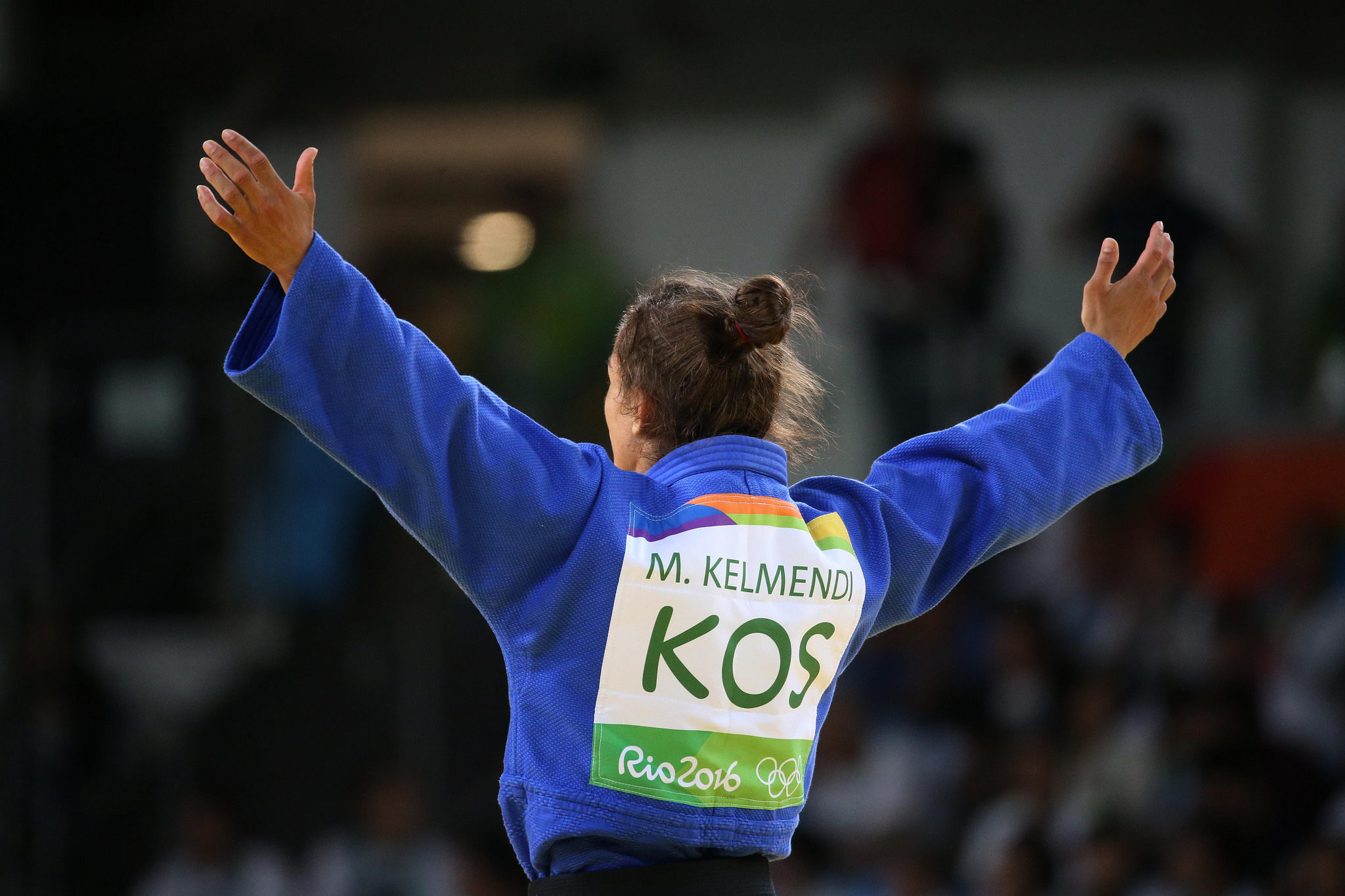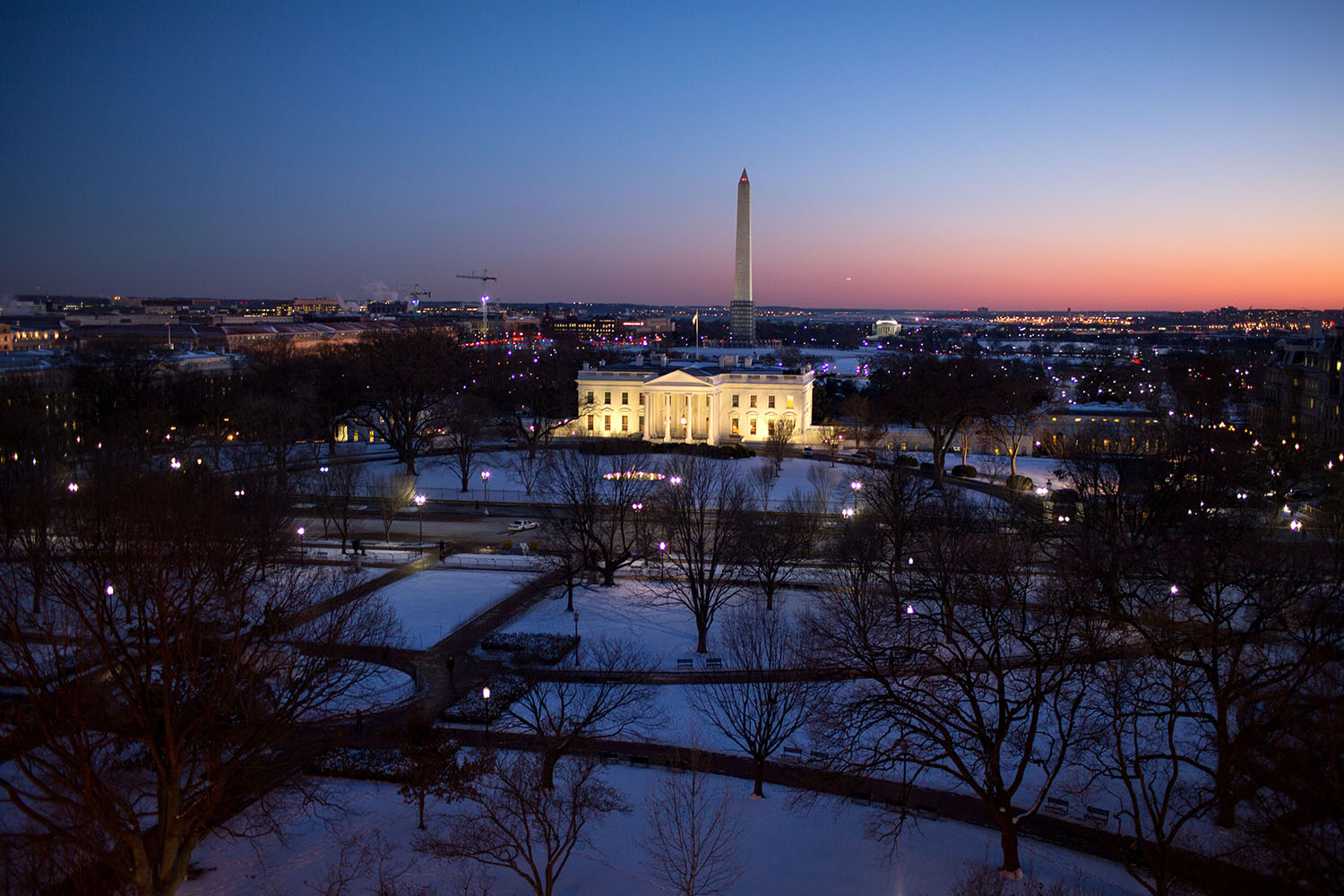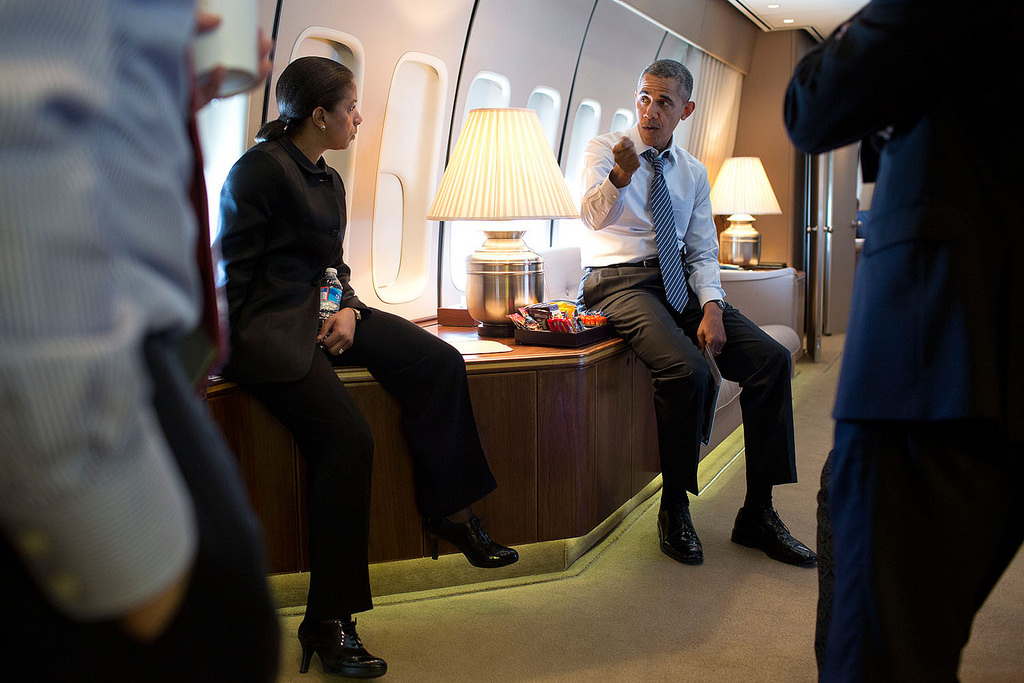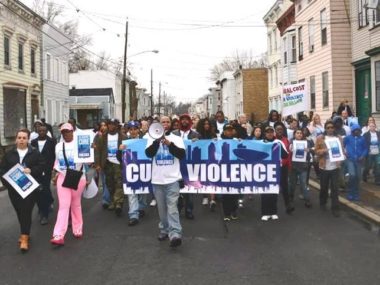By Fletcher D. Cox and Timothy D. Sisk for Denver Dialogues.
Majlinda Kelmendi of Kosovo’s Olympic Gold Medal won in judo was doubly significant for her young country. First, Rio was Kosovo’s first-ever Olympics – it became controversially independent in 2008 and its Olympic Committee was not recognized until 2014 (conveniently, after the now much-maligned Sochi Winter Games); Kelmendi, already a champion in judo, carried the Kosovo flag first into the Olympic stadium. Second, by default, her gold medal was the country’s first-ever Olympic medal of any kind.
Back home, Kosovo remains deeply divided along the essentially ethnic lines that emerged during its mostly successful secessionist bid from Serbia (Kosovo’s independence is still not fully recognized, and tensions remain with a small Serb minority along with important Orthodox sites). July, for example, saw tense but mostly peaceful marches by Kosovo’s minority Serbs to holy sites.
In the wake of Kelmendi’s victory, though, thousands lined the streets of the capital, Pristina, chanting the 25-year old’s name in a jubilant celebration of national pride. Kelmendi reflected on the importance of her gold-medal victory:
It means a lot. People, especially kids in Kosovo, look to me as a hero…. I just proved to them that even after the war, even after we survived a war, if they want something they can have it. If they want to be Olympic champions, they can be – even if we come from a small country, a poor country.
Historians have long explored how sport can contribute to nationalism, a sense of common destiny, and “social cohesion” through the production of “invented traditions” (remembrances, holidays, rituals, oaths, etc.) that instill national pride. Perhaps this will be the beginning of a special relationship between the long-term evolution of the Kosovo national origin myth and the Olympic Games. So, did Kelmendi’s prize contribute to long-term social cohesion? Only time will tell.
The Kosovo case does, however, offer an opportunity to present some social-science research on the topic. In a forthcoming book – Peacebuilding in Deeply Divided Societies: Toward Social Cohesion (Palgrave) – we present the research findings of a team of international and “Global South” authors who together explore the social dynamics of conflict and cohesion in seven case studies that evaluate how outsiders have sought to, essentially, engineer harmony. Here we present a few essential findings that speak to broader issues in understanding the conditions under which social dynamics such as sport are related to the development of a peaceful, inclusive national identity.
What is Social Cohesion?
Social cohesion as a concept, and its role in deeply divided societies such as Kosovo, is a concept now in vogue. In the wake of civil wars and large-scale social violence during the 1990s and 2000s, international interventions for peacebuilding and statebuilding have generated a broad spectrum of “lessons learned” around the challenges of international engagement in environments with high levels of identity-based social fragmentation, often called “deeply divided societies.”
Policy frameworks from organizations such as the UN Development Program, World Bank, and the OECD club of donors now suggest that a pivotal factor for successful post-conflict recovery and violence reduction is the strengthening of inter-group social bonds, as well as re-establishing trust between social groups and the state. In other words, peacebuilding and development actors have learned that both “horizontal” and “vertical” cohesion are necessary conditions for the sustainability of peace settlements, building state capacity, and fostering socio-economic development.
Peacebuilding as Social Cohesion: Five Findings
Through comparative, case study-based research we present a few cross-case findings on the nature of social cohesion as both an attribute of a society and as an outcome of peacebuilding interventions intended to engineer trust across lines of conflict.
Finding #1: Social Cohesion is Ephemeral
In the cases we investigate – Guatemala, Lebanon, Kenya, Myanmar, Nepal, Nigeria, and Sri Lanka – social cohesion remains elusive and peace can be ephemeral, even where strategically designed “conflict-sensitive” approaches to intervention have been employed. Exclusive governments exacerbate such dynamics, particularly when elites mobilize for power along divisive religious, ethnic or sectarian lines. Debates over devolution, ethnic federation, and local-level power sharing are fraught with problems and dilemmas.
Social cohesion and fragmentation are constantly evolving in relation to conflict and other conditions, such as economic crisis. For example, in Sri Lanka, the war contributed to a further radicalization of the polities, an increased sense of isolation of the Tamil community from the State, and a polarization between communities. Even while the war had a significant impact on both societal relations and relations between minorities and the state, it is important to note that in this context the state and, to lesser extent, social ties between communities did not completely break down and economic growth actually remained relatively stable during the war.
In some cases, however, the shared experience of violence unifies previously divided groups. In such cases, the shared experience of war or state repression functions as one of the most powerful factors contributing to identity formation and reformation. During the civil war in Guatemala, for example, it was dangerous to be perceived as indigenous, but after its end there has been a dynamic of “Mayanization.” A Pan-Maya identity has grown out of a collective experience of violence and victimization. Thus, while conflict is unambiguously bad for social cohesion, such experiences invariably shape the ways that cohesion is manifested.
Finding #2: “Ethnic” Conflict is Often Not About Identity
Patterns of social cohesion and the strategies that groups use to co-exist peacefully vary from case to case, especially where there are high levels of human insecurity. In many cases, groups (even without assistance from the state or international actors) renegotiate unique ways of resolving grievances and living together – even with former enemies – in relative peace.
Social cohesion breaks down under various combinations of pressures. Critical junctures occur where violence ensues and dominant groups that acquired power post-independence tend to hold onto power, often using repression and targeted political violence as tactics to prevent marginalized groups from gaining access to power. In post-conflict settings, social cohesion, therefore, typically requires reformulating the ethnic balance of power. The historical dominance of single ethnic groups or blocs of larger ethnic coalitions creates deeply entrenched forms of marginalization that are especially volatile (e.g. Kenya, Nigeria, Sri Lanka, in contrast to Tanzania, where no single dominant group or coalition emerged).
New forms of religious identity (more global and more individualistic) affect older inter- and intra-group relationships in many of the cases. Religious movements, including Pentecostalism, Evangelicalism, and Islamism, play very important roles in many of the conflict-affected countries under consideration. While sectarianism is creating new forms of strife, the breakdown of older religious hierarchies that underpin binary social cleavages could potentially help foster social cohesion. The case studies in the volume demonstrate that Pentecostals and Evangelicals (particularly in Guatemala and Nigeria, respectively), and Islamists in Lebanon, Kenya, and Nigeria, are challenging old forms of social cohesion and creating new, uncertain situations in these countries.
Finding #3: In the Modern Era, Cohesion Requires a Commitment to Multiculturalism
Social cohesion can result from the emergence of a shared vision for a plural society, but direct “nation-building” efforts have proven very complex in conflict-affected countries. More cohesive national identities in advanced industrial countries emerged within culturally specific contexts based on shared histories and sets of shared values. Critically, this long evolution does not seem easily, or quickly, transferable to societies where exclusive views of nationalism tend to polarize society from within. The key challenge for nation building is the articulation of a vision and a set of shareable values for a plural, or multicultural, society.
Different states have used various symbols and strategies to try to construct the nation across lines of deep division. For example, Kenya has tried to promote pamoja (unity in diversity) as the basis for national unity, an agenda that many citizens view as inconsistent with divisive elite behavior and persistent identity-based political mobilization. Similarly, Myanmar’s government endorsed a narrative of the “union spirit” as an effort to construct a more unified national identity. Key minority groups, however, remain deeply excluded and marginalized, especially the Rohingya and ethnic Chinese. Constructing a Buddhist nation in Myanmar, or attempts to develop a larger, but principally Buddhist, national identity, is reported to instigate systematic violence against the minority Rohingya Muslims, who are not claimed as citizens. Politicians are hesitant to denounce the violence against them because they need political support from the majority. Notably, however, a new internationally-led commission has been recently appointed through which this issue can be resolved with the assistance of international support (see the project’s final report for a summary of the Nepal case study; a full version appears in the forthcoming book).
Finding #4: Cohesion Flows from Good Public Policy
Across all of the cases under consideration, public policy issues of land rights and indigeneity were highly volatile (especially in the cases of Guatemala, Kenya, Nepal, and Sri Lanka). Thus, there is a “land-identity nexus” that must be taken into account in relationship to social cohesion, together with other dimensions of public policy. The unequal distribution of land along identity lines is a major factor that prevents the emergence of cohesive societies. Similarly, unequal allocation of state resources along identity lines – or unequal service delivery – also plays a major role in deepening social divisions.
State-led efforts toward constructing trust through new narratives of “cohesion” and “integration,” often with real meaningful or tangible change at the societal level, have little immediate measurable impact and are themselves deeply contested. Social cohesion is more likely to form over time where strong institutions cause groups to interact with one another under conditions of equality, and where an inclusive state provides basic services to all groups equally. Nigeria and Kenya are clear examples where ethnic patronage politics is endemic and where elites benefit greatly from state resources in comparison to society at large.
In Lebanon, too, sectarian elites benefit from the status quo. Similar to Kenya and Nigeria, the patronage system still drives politics and will arguably continue to do so as long as there are no substantive incentives for shifting away from a clientelist sectarian system. In the case of Nepal, democratization and poor governance have created a window for identity based mobilization and protest. “Identity politics” is on the rise, with different and often clashing demands for territorial autonomy, based on identity attributes related to region and language (Madheshi and ethnic groups), religion (Muslim, ethnic groups), and caste (Dalit).
Finding #5: Well-designed Development Assistance Can Contribute to Social Cohesion
Despite a high level of contextual variation around how the concept of “social cohesion” is used across all seven cases, there is evidence of a high level of “norm diffusion” across donor policy frameworks and programs. For example, the concept of social cohesion is used widely and directly in Kenya. This is largely due to the fact that in the wake of post-election violence in 2007-2008, donors integrated peacebuilding and humanitarian responses around a common “community security and social cohesion” approach. The concept of social cohesion was directly integrated into the national “peace architecture” through the “National Cohesion and Integration Commission,” whose motto “unity in diversity” is widely displayed on banners across the country.
In Nepal, with no direct translation for “social cohesion,” local peacebuilding actors tend to refer to a culturally embedded notion of “sadhbahv” or “social harmony.” While the concept is linked historically to the caste system – a hierarchical social structure that supposedly generates “harmony” – donors employ it within projects designed to foster more equal and integrated social relationships and networks. Even though the concept of social cohesion has limited application across the broader polity, international donors and domestic CSOs have broadly embraced and promoted the concept. UNICEF views their primary role in Nepal as building the capacity of the state to provide social services (education and health) as a direct mechanism for creating social cohesion and reducing conflict vulnerability.
In addition to chance events – such as a well-loved athlete bringing home a Gold Medal in the name of the nation – which promote social cohesion, using development assistance to promote social harmony is now part and parcel of the peacebuilding toolkit. How external activities are designed to support such efforts in local contexts is critical, as is some clarity in understanding what they are designed to achieve. Ultimately, we found that concrete, quotidian efforts to achieve public policy change on security, land, or language offer the most help in fostering genuine and lasting social cohesion within deeply-divided societies. That is, social cohesion emerges from the everyday interactions within society, especially in civil society that crosses group lines – very often, sport organizations – and perhaps it is at this this level and in this manner that those from outside can best contribute to social cohesion within deeply divided societies.
Fletcher D. Cox is Assistant Professor in the Department of Political Science at William Jewell College, Liberty, Missouri. Timothy D. Sisk is Professor of International and Comparative Politics at the Josef Korbel School of International Studies, University of Denver.
Note: This project was supported by a grant from the Henry Luce Foundation Initiative in Religion and International Affairs. The project’s final report can be found at: http://www.du.edu/korbel/sie/research/sisk_religion_and_social_cohesion.html





